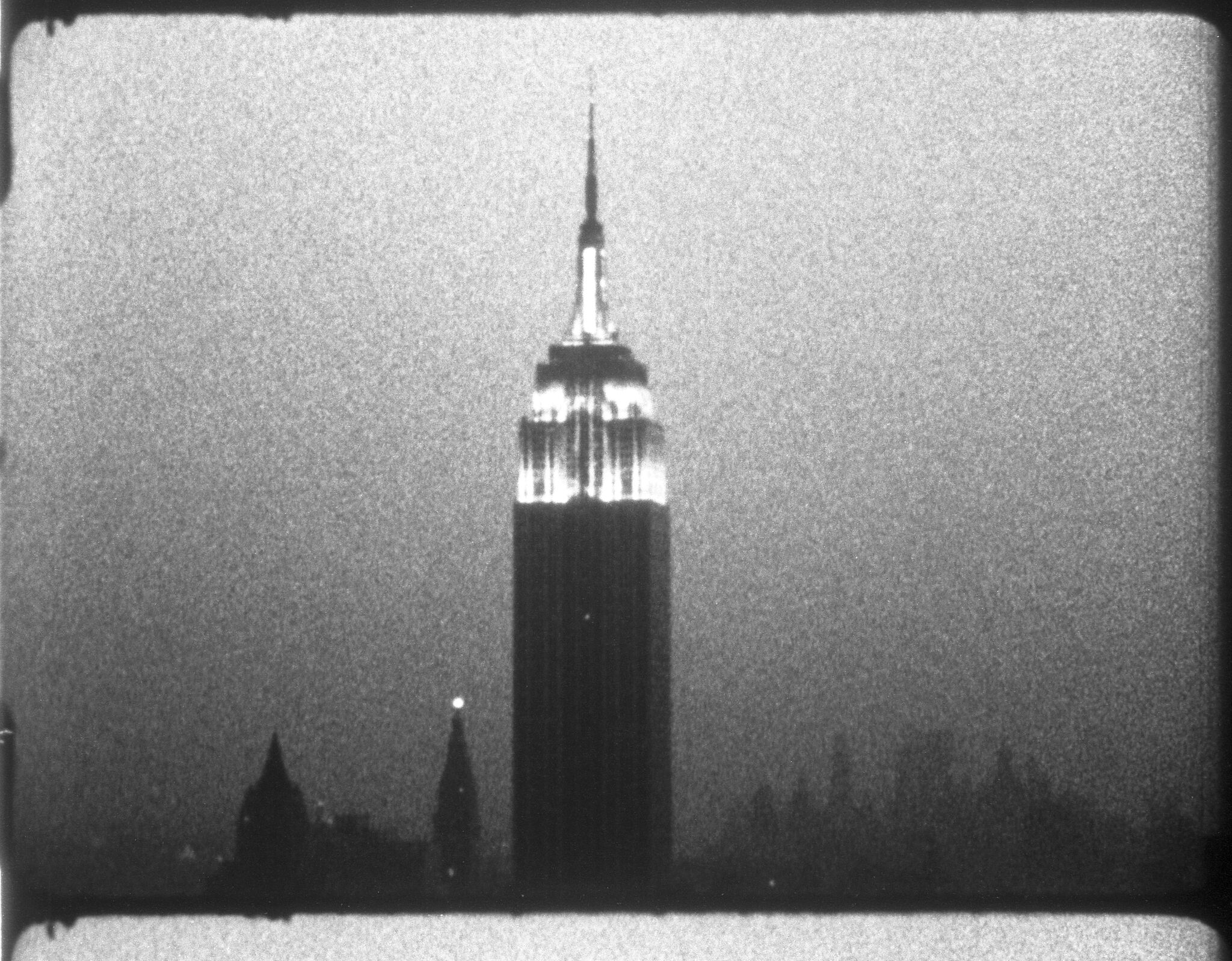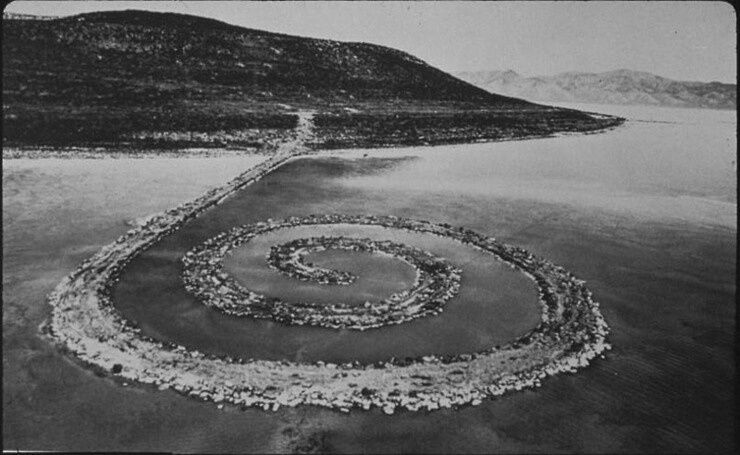Film
Featured Resources
The Andy Warhol Film Project
From 1963 through 1968 Andy Warhol produced nearly 650 films, including hundreds of silent Screen Tests, or portrait films, and dozens of full-length movies, in styles ranging from minimalist avant-garde to commercial “sexploitation.”
The Andy Warhol Film Project began in the 1980s when the Whitney Museum and The Museum of Modern Art agreed to collaborate on the largest archival research project in the history of American avant-garde cinema: to catalogue Warhol’s massive film collection, investigate its history, and preserve and re-release all of the films in conjunction with a program of scholarly research and publication.
Castelli-Sonnabend Tapes and Films
Castelli-Sonnabend Tapes and Films is a unique anthology of American artists’ films and videotapes made in the 1960s and 1970s. The anthology was assembled for distribution by the pioneering New York dealers Leo Castelli and Ileana Sonnabend in the early 1970s, and was run by Nina Sundell and Joyce Nereaux, based in a loft on Greene Street, Soho.
Castelli and Sonnabend were responding to a strong engagement with film and video by a new generation of post-Minimalist artists that included Bruce Nauman, Richard Serra, Ed Ruscha, Robert Morris, Claes Oldenburg, John Chamberlain, Vito Acconci, Lawrence Weiner, Yvonne Rainer, Joan Jonas, Robert Smithson, Nancy Holt, and William Wegman, among others. Castelli also commissioned several films and videotapes, which were premiered at the gallery.
A distribution catalogue of the films and videotapes was published, with entries on each work. Distribution continued until the early 1990s. Some of the videotapes and films are now distributed by Electronic Arts Intermix, New York, and Video Databank, Chicago.
Since 1998, with the agreement of both Leo Castelli and Ileanna Sonnabend, the Whitney Museum has been re-assembing Castelli-Sonnabend Tapes and Films as a special collection within the museum’s permanent collection. This ongoing project includes the conservation of many works that have not been shown since the 1970s, including Robert Morris’s films and Claes Oldenburg’s Happenings films.
Castelli-Sonnabend Tapes and Films encompasses many of the most influential film and video works of the 1960s and 70s. The re-constitution of this unique group is retrieving many works not seen since that period, and re-inserting them into the dialogue of contemporary art.
History of Film and Video at the Whitney
1970–2009
The Film and Video program at the Whitney Museum began with the creation of the New American Filmmakers series in 1970. Developed in response to a new generation of filmmakers who were producing works outside the studio system, the series presented independent and experimental films that reflected many of the key issues of the day, from the Vietnam War, drugs, and the Black Panthers, to homosexuality and the women’s liberation movement. The series was launched with Skezag (1970) by Joel Freedman and Philip Messina, a searing documentary on Vietnam veterans and hard drugs. Several other key films premiered at the Whitney at that time, including Norman Mailer’s Maidstone (1971) and Steven Arnold’s Luminous Procuress (1972).
With funding from the Rockefeller Foundation, the Film and Video Gallery on the Museum’s second floor was outfitted to be a flexible exhibition space for films, videos, and installations. The creation of a Film and Video Gallery within the larger galleries was—and remains—a unique innovation. Its flexible design allowed for installations of film and video as well as the screening of films in a theatrical setting. Additionally, unlike in other museums, the gallery has a fully equipped film booth, with Super-8, 16mm, 35mm film, and video projection.
Film and video were soon fully integrated into the Whitney’s exhibition program. Video first became part of the Whitney Biennial exhibition in 1975, followed by film in 1979. In the years since, film and video works on view have ranged from features and surveys of individual filmmakers to themed series to film and video installations and artists' films. Several landmark large-scale film and video exhibitions have also been presented, including Video Art: Expanded Forms (1988), Nam June Paik (1982), and Into the Light: The Projected Image in American Art 1964–1977 (2001).
Another pillar of the Museum's film and video program is The Andy Warhol Film Project. Initiated in 1984 as a collaboration between the Whitney Museum and the Museum of Modern Art and approved by Warhol himself, it remains the largest archival research project in the history of American avant-garde cinema.
Film and Video in the Whitney's Collection
Film and video holdings form an important part of the Whitney’s permanent collection, tracing the early beginnings of video art and film installation through to the newest works produced by contemporary artists. The Whitney’s Breuer building opened in 1966 at the same moment that video art was emerging. The film and video works in the collection mark the dramatic shift that occurred at that moment, as artists challenged the traditional mediums of painting and sculpture by creating performances, film installations, videos, slide works, and films.
Highlights of the collection include a large number of film installations and artists’ films from the 1960s and 1970s. The Whitney holds the Castelli-Sonnabend Tapes and Films collection, comprising works by Vito Acconci, John Baldessari, Bruce Nauman, Ed Ruscha, Claes Oldenburg, Richard Serra, Robert Morris, Lawrence Weiner, and many others. One of the earliest works in the Museum's collection is Nam June Paik’s video sculpture Magnet TV (1965), in which a powerful magnet placed on top of the TV set distorts an abstract image on the screen by altering the TV’s electronic signals. Another work in the collection, Bruce Conner’s three screen projection work EVE-RAY-FOREVER (1965/2006), is one of the first film installations ever made.
The Museum’s collection also includes historic works by, among others, Dennis Oppenheim, Peter Campus, Carolee Schneemann, Anthony McCall, and Joan Jonas. Key works from the 1980s are also represented in the collection, with pieces by Nan Goldin, Jack Goldstein, Bill Viola, Bruce Nauman, and Adrian Piper.
Since the early 1990s, film and video has been embraced by a new generation of artists, some of whom received their first museum showing at the Whitney, often in Biennial exhibitions. These artists include Matthew Barney, Kara Walker, Christian Marclay, Doug Aitken, Sharon Lockhart, Rirkrit Tiravanija, Elad Lassry, Jordan Wolfson, Diana Thater, and Paul Pfeiffer.
In 1999, the Film and Video Committee was established to develop the acquisition of film and video for the Whitney’s collection. The Whitney’s holdings of film and video now form one of the major collections in the field, and have become an important locus for art historical scholarship.

